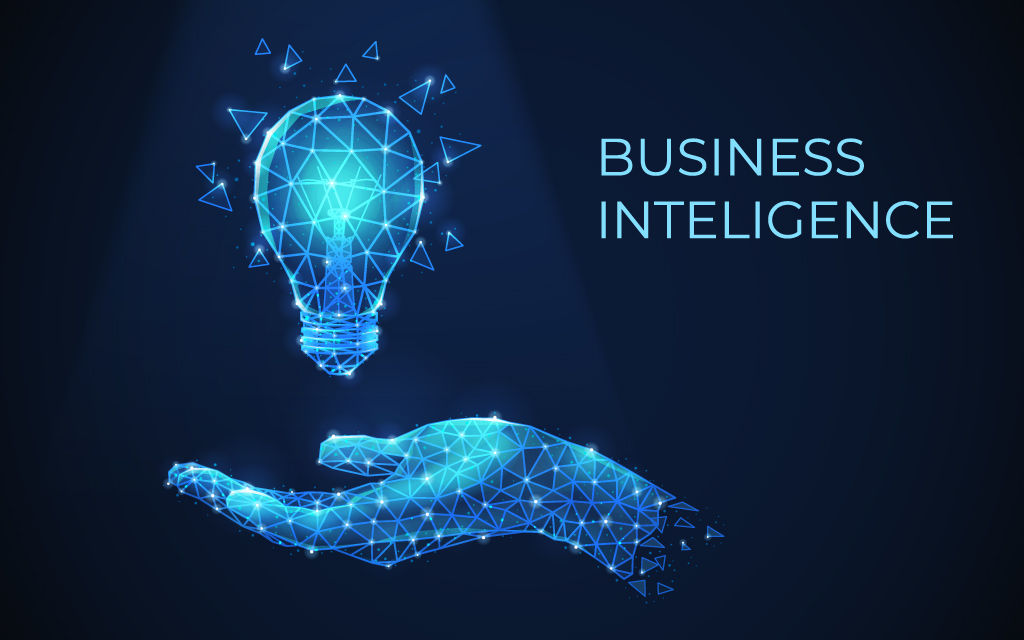
Photo by Intellspot
In the digital age, businesses are submerged in an ocean of data. Amidst this deluge of information, the ability to extract meaningful insights is paramount to success. Welcome to the realm of business intelligence (BI), a potent ally that empowers organizations to decipher data and make informed decisions.
At its core, business intelligence (BI) is the process of transforming raw data into actionable insights. It encompasses a set of technologies, practices, and strategies that enable organizations to analyze data, derive meaningful conclusions, and drive strategic decision-making.
Business intelligence tools encompass a wide array of functionalities, ranging from data visualization and reporting to advanced analytics and predictive modeling. These tools play a crucial role in enabling businesses to unlock the value hidden within their data, driving innovation, efficiency, and competitive advantage.
The Significance of Business Intelligence
-
Data-Driven Decision Making: BI enables businesses to base decisions on empirical evidence rather than intuition, fostering more accurate predictions and strategies. By leveraging historical data and real-time insights, organizations can anticipate market trends, identify emerging opportunities, and mitigate risks more effectively.
-
Enhanced Operational Efficiency: By scrutinizing historical and real-time data, BI identifies inefficiencies, streamlines processes, and optimizes resource allocation. Through detailed analysis of key performance indicators (KPIs) and operational metrics, organizations can identify bottlenecks, streamline workflows, and enhance productivity across various business functions.
-
Competitive Advantage: In today’s hyper-competitive business landscape, data-driven insights are a cornerstone of sustainable competitive advantage. BI empowers organizations to gain a deep understanding of market trends, consumer behavior, and competitor strategies. Armed with this knowledge, businesses can tailor their offerings, optimize marketing campaigns, and capitalize on emerging opportunities, positioning themselves ahead of the competition.
Essential Business Intelligence Tools
-
Tableau: Renowned for its intuitive interface and robust visualization capabilities, Tableau empowers users to create interactive dashboards and visually compelling reports. With drag-and-drop functionality and a vast library of visualization options, Tableau enables users to explore data dynamically, uncovering insights and trends with ease.
Example: A retail company can utilize Tableau to visualize sales trends across different regions, product categories, and customer segments, optimizing inventory and marketing strategies. By drilling down into granular data points, retailers can identify high-performing products, target lucrative customer segments, and tailor promotional campaigns for maximum impact.
-
Power BI: Developed by Microsoft, Power BI offers a comprehensive suite of tools for data modeling, real-time analytics, and seamless integration with other Microsoft products. With its user-friendly interface and robust data connectivity options, Power BI enables organizations to extract insights from a wide range of data sources, including structured databases, cloud services, and streaming datasets.
Example: A manufacturing firm can harness Power BI to monitor production processes in real-time, analyze machine performance, and predict maintenance needs for improved efficiency. By aggregating data from IoT sensors, production logs, and quality control systems, manufacturers can identify potential issues proactively, minimize downtime, and optimize production schedules to meet demand.
-
QlikView/Qlik Sense: Qlik’s associative model facilitates intuitive data exploration, enabling users to navigate complex relationships within the data for deeper analysis and discovery. By enabling users to explore data interactively and uncover hidden insights, QlikView and Qlik Sense empower organizations to make data-driven decisions with confidence.
Example: A financial institution can employ Qlik Sense to analyze customer transaction data, detect patterns of fraudulent activities, and enhance security measures. By visualizing transaction patterns, monitoring account activity in real-time, and identifying anomalies, banks can prevent fraud more effectively, safeguarding customer assets and preserving trust.
-
Looker: Looker distinguishes itself with powerful data modeling and exploration features, fostering a collaborative environment for data analysis and decision-making. With its centralized data model and flexible architecture, Looker enables organizations to build data-driven cultures, empowering users across the organization to access, analyze, and share insights seamlessly.
Example: An e-commerce platform can leverage Looker to understand customer behavior, optimize website performance, and personalize user experiences based on data-driven insights. By analyzing customer browsing behavior, purchase history, and demographic data, e-commerce companies can tailor product recommendations, optimize pricing strategies, and enhance customer engagement, driving sales and loyalty.
Works Cited
- “From QlikView to Qlik Analytics.” Qlik, www.qlik.com/us/products/qlikview. Accessed 12 Feb. 2024.
- “Looker Business Intelligence Platform Embedded Analytics.” Google Cloud, cloud.google.com/looker. Accessed 12 Feb. 2024.
- Power BI – Data Visualization. www.microsoft.com/en-us/power-platform/products/power-bi. Accessed 12 Feb. 2024.
- “Tableau: Business Intelligence and Analytics Software.” Tableau, www.tableau.com. Accessed 12 Feb. 2024.


